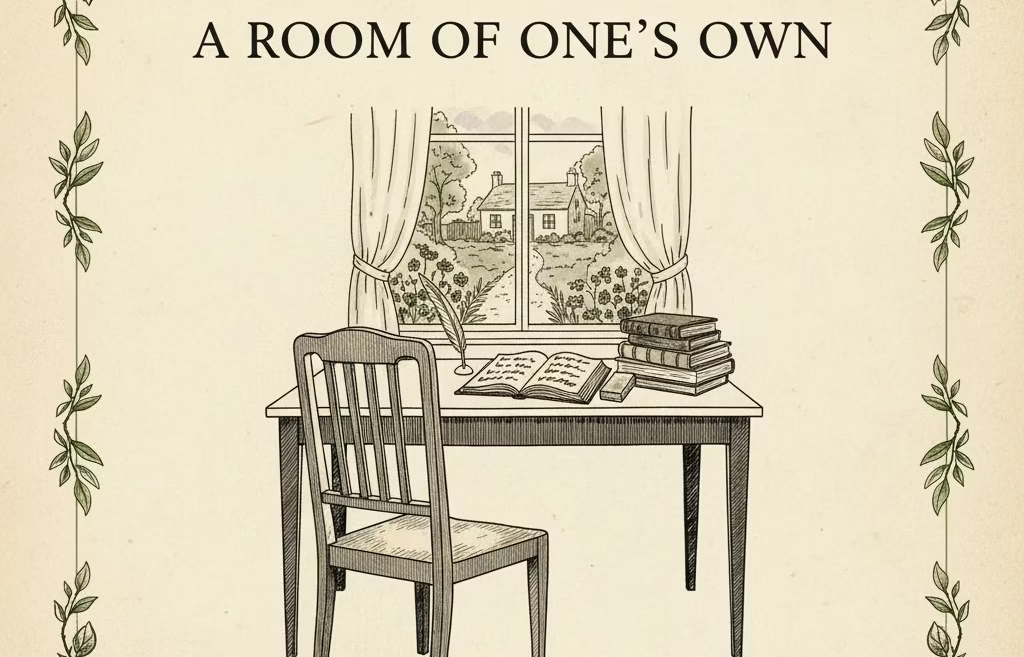Introduction to The Duchess of Malfi
John Webster’s The Duchess of Malfi is a masterpiece that continues to captivate readers and theatre audiences more than four centuries after its debut. First performed in 1613–1614 and published in 1623, this play stands as a pillar of Jacobean tragedy, renowned for its psychological depth, poetic language, and relentless exploration of power, gender, and corruption. But what makes The Duchess of Malfi such an enduring work?
The Duchess of Malfi in Context
What is The Duchess of Malfi?
The Duchess of Malfi is a Jacobean revenge tragedy inspired by the real-life story of Giovanna d’Aragona, Duchess of Amalfi. The play follows the titular Duchess, a young widow who secretly marries her steward, Antonio, defying her two powerful brothers—Ferdinand and the Cardinal. Their obsessive control and vengeful actions set off a chain of violence and tragedy, ultimately leading to devastation for nearly every character involved. Not only does the play provide a gripping narrative, but it also offers a window into the anxieties and social structures of the Jacobean era. FOR FULL TEXT
The Historical and Literary Context of The Duchess of Malfi
John Webster and the Jacobean Stage
John Webster (c. 1580 – c. 1634) was a contemporary of Shakespeare and is celebrated for his dark, poetic tragedies. The Duchess of Malfi is often considered the last great tragedy of the Elizabethan and Jacobean eras, rivaling even Shakespeare’s most acclaimed works. Webster’s style is marked by dense symbolism, intricate plotting, and a fascination with the darker aspects of human nature. His ability to blend horror, beauty, and philosophical insight makes his plays uniquely compelling.
Real-Life Inspiration Behind The Duchess of Malfi
The play is loosely based on the life of Giovanna d’Aragona, whose clandestine marriage and subsequent murder by her brothers shocked Renaissance Italy. Furthermore, Webster’s adaptation transforms this true story into a meditation on power, autonomy, and the consequences of unchecked ambition. Thus, The Duchess of Malfi stands as both a historical drama and a timeless exploration of human frailty.
Major Themes in The Duchess of Malfi
Power and Corruption in The Duchess of Malfi
At its core, The Duchess of Malfi is a study of corruption—political, religious, and personal. The Duchess’s brothers, Ferdinand and the Cardinal, wield their authority with cruelty, manipulating institutions and people to serve their own interests. The Cardinal, in particular, weaponizes religion, using his position to justify immoral actions. Consequently, the play exposes the dangers of absolute power and the ease with which it can be abused.
Gender and Patriarchy Explored in The Duchess of Malfi
Webster’s portrayal of the Duchess is groundbreaking for its time. She is a strong, autonomous woman who asserts her right to love and marry whom she chooses, directly challenging the patriarchal norms of Jacobean society. Her resistance to her brothers’ control and her refusal to be defined by their expectations make her a proto-feminist figure. Moreover, the play critiques the limited roles available to women and the violence that can result from challenging those roles.
Love, Marriage, and Social Status in The Duchess of Malfi
The Duchess’s secret marriage to Antonio, a man of lower social standing, is both an act of love and defiance. This union challenges the rigid class hierarchies of the time and exposes the dangers of valuing social status over personal happiness. Furthermore, the play suggests that true love can flourish even in the most oppressive circumstances, although it often comes at a high cost.
Revenge and Tragedy in The Duchess of Malfi
As a revenge tragedy, the play is filled with violence, betrayal, and psychological torment. The brothers’ obsessive need to control and punish their sister leads to a cycle of destruction that ultimately consumes them as well. Thus, Webster explores the futility of revenge and the tragic consequences of unchecked hatred. READ MORE
Character Analysis in The Duchess of Malfi
The Duchess: A Proto-Feminist Heroine
The Duchess is the play’s moral and emotional center. Despite immense pressure, she remains dignified and courageous, even in the face of death. Her famous declaration, “I am Duchess of Malfi still,” epitomizes her unwavering sense of self and agency. Also, she embodies resilience, compassion, and a refusal to be diminished by the cruelty of others.
Ferdinand and the Cardinal: Embodiments of Corruption
The Duchess’s brothers are among the most chilling villains in Renaissance drama. Ferdinand’s madness and the Cardinal’s cold calculation represent different facets of patriarchal tyranny and moral decay. Moreover, their actions are driven by a toxic mix of possessiveness, jealousy, and a desire for control, ultimately leading to their own downfall.
Antonio: The Loyal Outsider
Antonio, the Duchess’s secret husband, is portrayed as loyal and virtuous but ultimately powerless against the forces arrayed against him. Additionally, his love for the Duchess is sincere, yet his lower social status makes him vulnerable. As a result, Antonio’s fate serves as a commentary on the dangers of social mobility in a rigidly hierarchical society.
Bosola: The Tragic Antihero
Bosola, the play’s complex antihero, serves as both spy and avenger. His shifting loyalties and moral ambiguity make him one of Webster’s most intriguing creations. Initially complicit in the brothers’ schemes, Bosola ultimately seeks redemption, thus highlighting the possibility of moral awakening even in the darkest circumstances.
Structure and Style of The Duchess of Malfi
Five-Act Structure
The Duchess of Malfi unfolds over five acts, tracing the rise and fall of its characters with relentless logic. The play’s structure mirrors the inexorable progression from love and hope to horror and despair. Each act builds tension and deepens the psychological complexity of the characters, culminating in a powerful and tragic conclusion.
Poetic Language and Symbolism
Webster’s use of language is both lyrical and brutal. The play is filled with memorable imagery and metaphors, such as the recurring motif of darkness and disease, which symbolise the moral rot at the heart of the court. For example, Bosola’s observation, “He and his brother are like plum-trees that grow crooked over standing-pools; they are rich, and overladen with fruit, but none but crows, pies and caterpillars feed on them,” vividly captures the corruption of power.
Enduring Relevance of The Duchess of Malfi
Feminist Interpretations
Modern critics often read the play as an early exploration of women’s rights and resistance to patriarchal oppression. The Duchess’s assertion of her autonomy and her tragic fate resonate with contemporary debates about gender and power. Therefore, the play continues to inspire new interpretations and discussions about the role of women in society.
Political and Social Critique
Webster’s depiction of a corrupt, hierarchical society continues to speak to audiences in times of political turmoil and social inequality. The play’s critique of authority, class, and institutional hypocrisy remains strikingly modern, demonstrating the timeless nature of its themes.
Famous Quotes from The Duchess of Malfi
“I am Duchess of Malfi still.” (The Duchess, Act 4 Scene 2)
“The misery of us that are born great! We are forc’d to woo, because none dare woo us.” (The Duchess, Act 1 Scene 3)
“Ambition, madam, is a great man’s madness.” (Antonio, Act 1 Scene 3)
“Whether we fall by ambition, blood or lust, Like diamonds we are cut with our own dust.” (Ferdinand, Act 5 Scene 5)
The Duchess of Malfi in Comparison
For students and scholars, The Duchess of Malfi is often compared to other works exploring marriage, gender, and power, such as Chaucer’s The Merchant’s Tale and Milton’s Paradise Lost. These comparisons highlight the play’s unique blend of personal tragedy and social critique, setting it apart as a singular achievement in English literature.
Conclusion
John Webster’s The Duchess of Malfi endures as a masterpiece of English drama. Its exploration of power, gender, and corruption, combined with unforgettable characters and poetic language, ensures its place in the literary canon. For anyone interested in the complexities of human nature and the dark undercurrents of society, The Duchess of Malfi remains essential reading. EXPLORE MORE PAGES
Frequently Asked Questions
What is the main theme of The Duchess of Malfi?
The main theme of The Duchess of Malfi is the corrupting influence of power and the struggle for autonomy in a patriarchal society. Moreover, the play also explores revenge, class, and the consequences of defying social norms.
Why is the Duchess considered a feminist character?
The Duchess is considered a feminist character because she asserts her right to choose her own husband and live on her own terms, challenging the expectations placed on women in Jacobean society.
How does The Duchess of Malfi reflect Jacobean society?
The play reflects Jacobean society through its portrayal of rigid class structures, patriarchal authority, and the dangers of unchecked ambition. It also critiques the corruption and hypocrisy of those in power.
What is the significance of Bosola in The Duchess of Malfi?
Bosola serves as both a villain and a tragic antihero. His journey from complicity to remorse highlights the possibility of redemption and the complexity of human morality.
Why does The Duchess of Malfi remain relevant today?
The Duchess of Malfi remains relevant due to its exploration of universal themes such as power, gender, corruption, and the human capacity for resilience. Also, its complex characters and poetic language continue to inspire new interpretations and adaptations.






1 Comment
[…] Ben Jonson’s Volpone is more than a comedy—it is a mirror held up to human folly, a biting critique of greed, and a testament to the enduring power of satire. Through its unforgettable characters, intricate plot, and moral vision, Volpone continues to engage, entertain, and provoke audiences, ensuring its place among the greatest works of English literature. EXPLORE OTHER WORKS […]